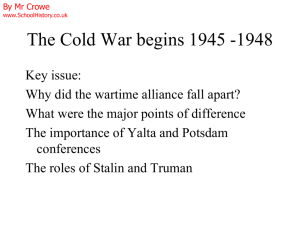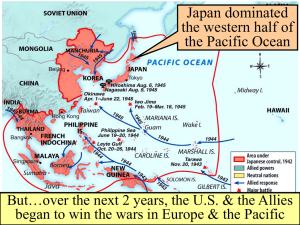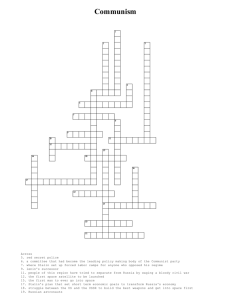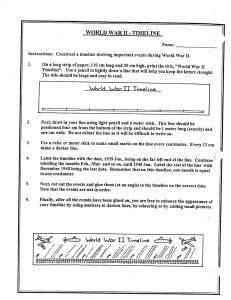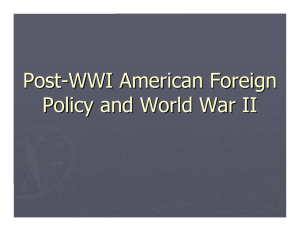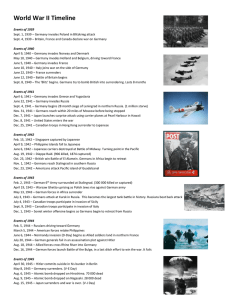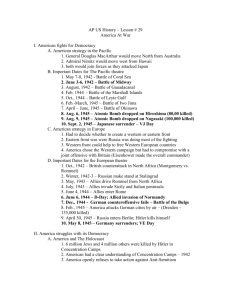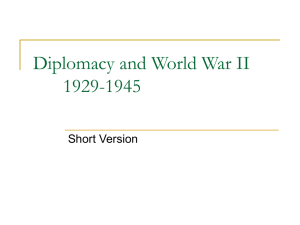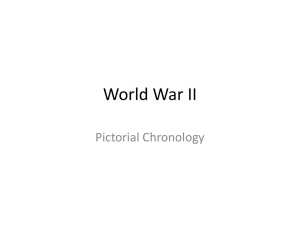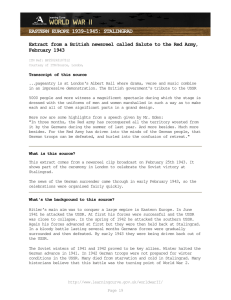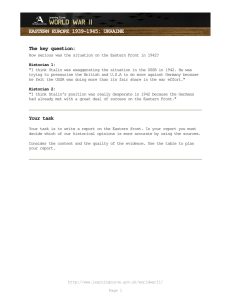World War II in American History: Still the Good War?
advertisement
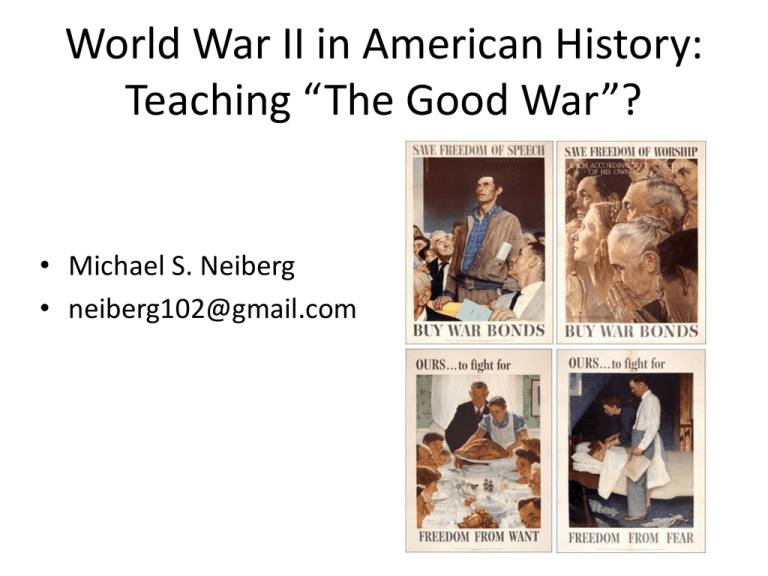
World War II in American History: Teaching “The Good War”? • Michael S. Neiberg • neiberg102@gmail.com “The Good War” The Good War New Themes in Teaching World War II Theme One: The US Role in the World Europe in Ruins • 75% of Berlin’s buildings uninhabitable • Food rationing continued in Britain until 1954 • 10,000,000 DPs, most in Germany against their will • France lost 500,000 buildings • USSR lost 70,000 villages • Yugoslavia lost 75% of its livestock Europe in Ruins • Two-thirds of all German males born in 1918 were dead • USSR lost 20,000,000 men • 200,000 Polish children had no parents alive • Hungary’s ration was 550 calories per day (US intake is 3,000) • 5,000,000 Jews killed • Infant mortality in Europe exceeded 25% in 1945 Potsdam Conference 17 July to 2 August 1945 • Unconditional Surrender for Japan • “The freely expressed will of the Japanese people” will determine its government • Each power to take reparations from its sector of Germany • Germany to be “denazified” • Surrender of Japanese forces in Korea and Vietnam agreed. Clement Atlee, Harry Truman, and Josef Stalin at Potsdam. France was not invited to send a representative. Role of the USA • Marshall Plan – $4.6 billion in aid to democratic capitalist states • Rapid redevelopment of Germany • Creation of NATO • Permanent place of the USA • Insertion of US firms into European economy • Formation of the United Nations, IMF Theme Two: Home Front USA Women welders at Ingalls Shipbuilders in Pascagoula, Mississippi, 1943 Aircraft Production 100000 90000 80000 70000 60000 50000 40000 30000 20000 10000 0 USA UK USSR Germany Japan 1940 1942 1944 Artillery Pieces 140000 120000 100000 1939 1941 1943 1945 80000 60000 40000 20000 0 US UK USSR Germany Major Naval Vessels 300 250 200 UK USSR Germany Japan 150 100 50 0 1940 1942 1944 Major Naval Vessels (USA included) 2500 2000 USA UK USSR Germany Japan 1500 1000 500 0 1940 1942 1944 Steel (in millions of tons) 80 70 60 USA UK USSR Germany Japan 50 40 30 20 10 0 1940 1942 1944 Labor Forces • 90 Division Gamble and Selective Service • US had three latent labor pools (women, African Americans, Mexicans) • US added 6,000,000 jobs in three years – GM alone added 750,000 • In Germany there were 400,000 fewer female workers in 1941 than 1939 Japanese Internment (Un)intended Consequences? Detroit Race Riot, 1943 What did the war really change? Lunch counter sit in Greensboro, NC, 1960 Theme Three: World War II’s Uniqueness Eisenhower and other senior American officers tour a liberated concentration camp The American Century Signing of the UN Charter, San Francisco, 1945 Unity Contrast to Later Wars Vietnam “Police Action” in Korea Some Further Reading • Paul Fussell, Wartime • Studs Terkel, The Good War • E. B. Sledge, With the Old Breed • David Nichols, ed. Ernie’s War • J. Glenn Gray, The Warriors Studs Terkel
